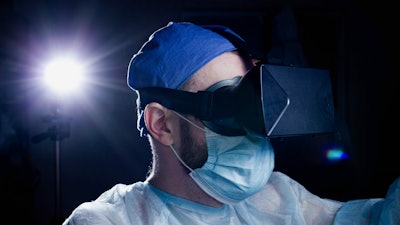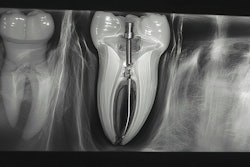
Using an augmented reality (AR) head-mounted device (HMD) to display a dynamic navigation system (DNS) in a surgical site may offer a practical way to remove fiber posts in endodontically treated teeth. The study was published on February 16 in the Journal of Endodontics.
The addition of the AR headset may not only improve the accuracy of a dynamic guide system, but it offered additional benefits, including improving a clinician’s hand-eye coordination, the authors wrote.
“(Until now,) no study has evaluated AR HMD integrated into DNS for fiber post-removal in endodontically treated teeth,” wrote the authors, led by Dr. Frederico Martinho, MS, PhD, of the division of endodontics at the University of Maryland School of Dentistry in Baltimore.
To investigate the feasibility of using an AR headset displaying a guide system for post removal, 50 maxillary first molars were implanted into a 3D-printed jaw and divided into an AR HMD plus DNS group (n=25) and a DNS group (n=25).
Palatal canals were restored with fiber posts and a core buildup was done. Additionally, cone-beam computed tomography scans were taken before and after posts were removed, and the drilling course and depth were planned in the navigation system. Global coronal deviation, global apical deviation, and angular deflection were measured, and the number of mishaps were recorded, according to the study.
Compared to the navigation system alone, the AR HMD plus DNS revealed significantly lower 3D global coronal, global apical, and angular deflection deviations below 1 mm when removing posts from molars, the authors wrote.
Furthermore, the system with and without the headset were equally efficient in time. Also, both removal techniques safely removed posts without mishaps, they wrote.
Nevertheless, overlaying the guide planning software and the live navigation digital screen onto the surgical site using the AR headset overcame a major challenge of the DNS. The surgeon did not have to look to the guide screen and away from the surgical area for navigation while drilling. Allowing the clinician to remain focused on the procedure site also improved the endodontist’s hand-eye coordination, the authors wrote.
However, the study had limitations, including the current cost of the headset, which is $3,500, they wrote.
In the future, more studies are needed to explore AR for different endodontic applications. Additionally, clinical studies must be conducted to explore the accuracy and efficiency of using the headset for post removal in endodontically treated teeth, the authors wrote.
“The AR HMD can safely display DNS in the surgical site for fiber post-removal in maxillary molars,” Martinho et al concluded.




















